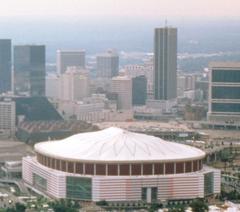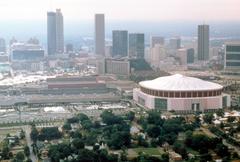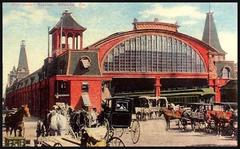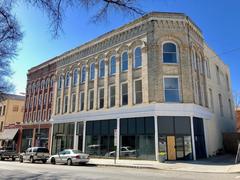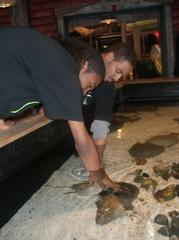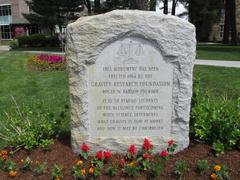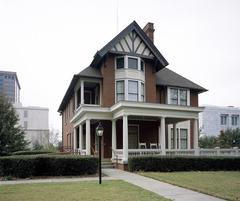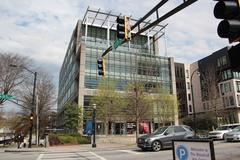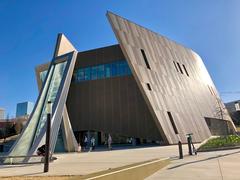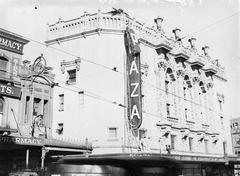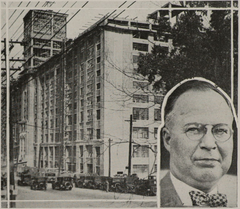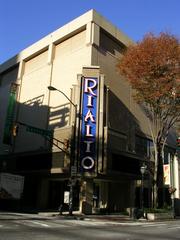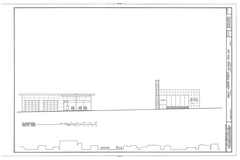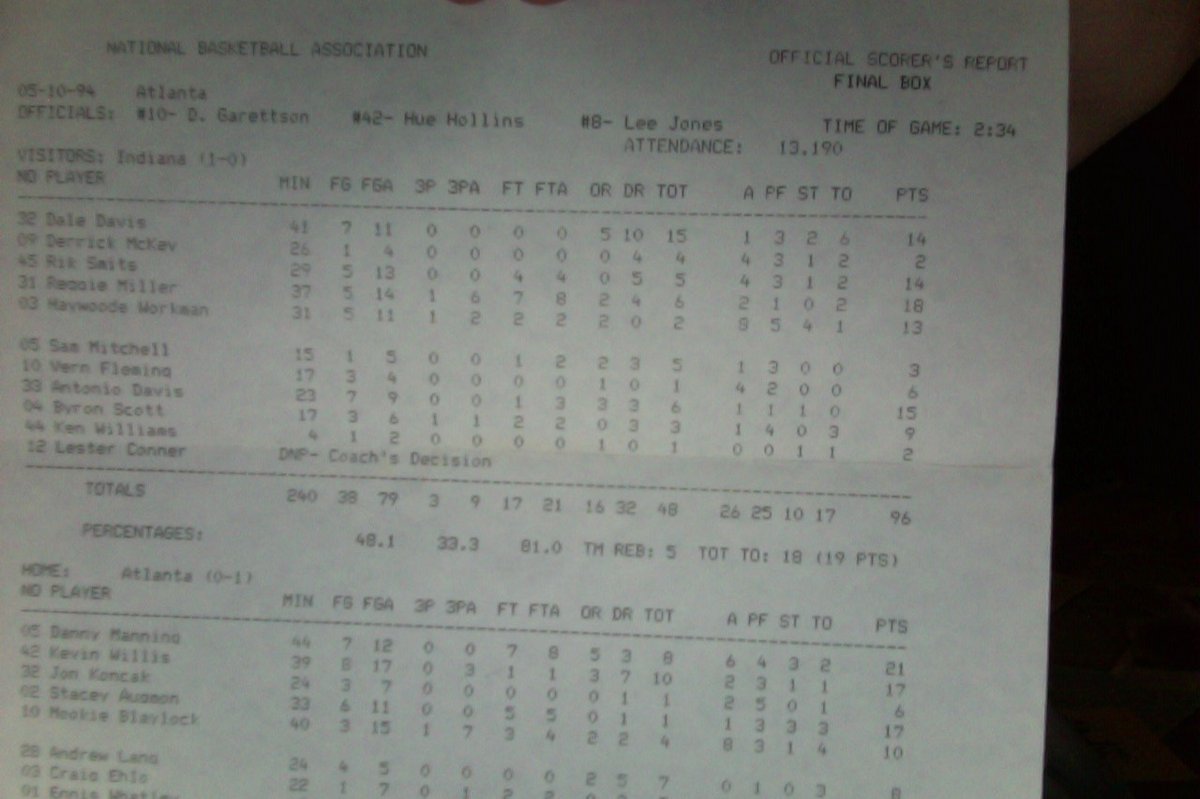
Omni Coliseum Atlanta: Visiting Hours, Tickets, and Historical Significance
Date: 14/06/2025
Introduction
The Omni Coliseum, once a cornerstone of Atlanta’s sports and entertainment scene, played a pivotal role in the city’s emergence as a major urban center. From its opening in 1972 until its demolition in 1997, the arena was celebrated for its architectural innovation, unique design, and as the home for iconic sports franchises and celebrated cultural events. Although the original structure is gone, its legacy endures through the site now occupied by State Farm Arena and the surrounding district, which remains a vibrant hub for visitors interested in Atlanta’s rich history (TVS Design; Curbed Atlanta; Atlanta History Center).
Table of Contents
- Historical Overview and Architectural Innovation
- Sporting Legacy
- Wrestling and Entertainment
- Political and Civic Role
- Structural and Operational Challenges
- Demolition: Process and Public Reaction
- Visiting the Omni Coliseum Site Today
- Exploring Surrounding Atlanta Historical Sites and Attractions
- Practical Visitor Information
- Frequently Asked Questions (FAQ)
- Visual Media
- Summary and Travel Advice
- References
Historical Overview and Architectural Innovation
Opened in 1972, the Omni Coliseum was an architectural trailblazer, boasting a distinctive ortho-quad truss roof system and cladding of Cor-Ten weathering steel. This material, intended to develop a protective rust-colored patina, was a bold choice that visually defined the arena within Atlanta’s skyline. With a seating capacity of over 16,000 for basketball and nearly 15,300 for hockey, the venue offered excellent sightlines and flexibility for various events (TVS Design; Wikipedia). The Omni’s innovative design became a template for later multi-purpose arenas across the United States.
Sporting Legacy
Home to Atlanta’s Professional Teams
The Omni Coliseum was the proud home of the NBA’s Atlanta Hawks (1972–1997) and the NHL’s Atlanta Flames (1972–1980), marking Atlanta’s ascension as a professional sports city (TVS Design; Wikipedia). The venue also hosted teams like the Atlanta Chiefs and the Atlanta Attack, further cementing its role in the city’s sporting culture.
Major Sporting Events
The Omni played host to numerous high-profile sporting events, including:
- 1977 NCAA Men’s Basketball Final Four
- 1978 NBA All-Star Game
- 1993 NCAA Women’s Basketball Final Four
- 1996 Summer Olympics Indoor Volleyball (TVS Design)
These events were significant milestones that elevated Atlanta’s status on the national and international sporting stage.
Wrestling and Entertainment
The Omni was a revered venue for professional wrestling, hosting prominent events for Georgia Championship Wrestling, Jim Crockett Promotions, and WCW, including the famed 1985 Starrcade and “Black Saturday” (The Signature Spot). In music, the arena’s stage saw over 220 concerts, with performances by legends such as Elton John, Elvis Presley, Cat Stevens, The Jackson 5, and The Grateful Dead, who played there 24 times (Doyle Tatum; We Were Funky).
Political and Civic Role
Beyond sports and entertainment, the Omni Coliseum was a site of civic importance, hosting the 1988 Democratic National Convention and serving as a gathering point for major public and political events (TVS Design).
Structural and Operational Challenges
Architectural Design and Material Issues
While the use of Cor-Ten steel was intended to create a low-maintenance, weathered look, Atlanta’s humid climate caused continuous corrosion, leading to structural vulnerabilities and maintenance headaches. This resulted in physical deterioration and, at times, unintentional access points for non-paying spectators (Curbed Atlanta).
Functional Limitations and Changing Expectations
By the 1990s, the Omni lagged behind newer venues in terms of amenities, lacking luxury boxes and modern guest services. Its seating capacity and inflexible design became less competitive, prompting tenants and city officials to consider replacement over renovation (Curbed Atlanta).
Demolition: Process and Public Reaction
Decision to Demolish
The combined effects of structural decay and outdated features led to the decision to demolish the Omni in the mid-1990s. The arena’s final event was in 1997, with the site cleared for the construction of the modern Philips Arena (now State Farm Arena), offering upgraded facilities and the amenities demanded by contemporary audiences (Curbed Atlanta).
The Implosion Event
In July 1997, the Omni Coliseum was brought down in a dramatic, televised implosion, an event that resonated across the city. The demolition was symbolic of Atlanta’s rapid transformation and urban renewal efforts. The CNN Center, located next door, even shook during the controlled blast, further etching the moment into local memory (Curbed Atlanta).
Aftermath and Redevelopment
The site’s redevelopment as Philips Arena, which opened in 1999 and later became State Farm Arena, marked a new era for Atlanta’s downtown district. The new venue addressed the shortcomings of its predecessor with expanded seating, luxury suites, and state-of-the-art facilities (Georgia Exhibits).
Visiting the Omni Coliseum Site Today
Is the Omni Coliseum Open to Visitors?
The original Omni Coliseum does not exist, and there are no visiting hours or tickets specific to the former arena. However, the site is fully accessible as it is now occupied by State Farm Arena, which continues to host major events and preserves elements of the Omni’s heritage, including the original scoreboard (TVS Design).
How to Experience the Omni’s Legacy
- State Farm Arena: Attend NBA games, concerts, or special events at the arena, and view the preserved elements from the Omni era.
- Guided Tours: State Farm Arena offers tours that sometimes include references to the Omni’s legacy; check the official website for current options.
- Digital Archives: Explore photo galleries and video archives through the Atlanta History Center and other local institutions.
Exploring Surrounding Atlanta Historical Sites and Attractions
The district around the former Omni site is rich in attractions:
- CNN Center: Offers studio tours and dining (CNN Center Tours).
- Centennial Olympic Park: A public green space commemorating the 1996 Olympics (Discover Atlanta).
- Georgia Aquarium: One of the world’s largest aquariums.
- World of Coca-Cola: Interactive museum on Coca-Cola’s history.
- College Football Hall of Fame, National Center for Civil and Human Rights, Children’s Museum of Atlanta, and SkyView Atlanta Ferris Wheel: All within easy walking distance.
Practical Visitor Information
Getting There
- Address: 1 State Farm Drive, Atlanta, GA 30303
- Public Transit: GWCC/CNN Center MARTA station is adjacent (MARTA)
- Parking: Multiple decks nearby; advance reservation recommended on event days
- Accessibility: The area is pedestrian-friendly and accessible to visitors with disabilities
Hours and Tickets
- State Farm Arena: Open during scheduled events only. Visit the events calendar for up-to-date hours.
- Tickets: Purchase via the State Farm Arena official website.
Visitor Tips
- Arrive early on event days to beat traffic; public transit is recommended.
- Dress for Atlanta’s climate, especially in summer.
- The area is generally safe, but exercise typical caution during large gatherings and nighttime.
Frequently Asked Questions (FAQ)
Q: Can I visit the original Omni Coliseum?
A: The Omni Coliseum was demolished in 1997. You can visit State Farm Arena, which occupies the same site.
Q: Are there tickets needed for the Omni Coliseum site?
A: No tickets are needed to visit the site, but event tickets are required for State Farm Arena.
Q: Are there tours about the Omni Coliseum?
A: While there are no dedicated Omni tours, State Farm Arena offers occasional tours, and the Atlanta History Center preserves the Omni’s story in its archives.
Q: What nearby attractions are recommended?
A: Centennial Olympic Park, CNN Center, Georgia Aquarium, World of Coca-Cola, and more are all within walking distance.
Visual Media
- Archival image of the Omni Coliseum (alt text: “Historic Omni Coliseum exterior in downtown Atlanta”)
- Photo of State Farm Arena today (alt text: “State Farm Arena, successor to the Omni Coliseum, located in downtown Atlanta”)
- Map of downtown Atlanta highlighting Omni Coliseum site and nearby attractions (alt text: “Map showing location of Omni Coliseum site and surrounding entertainment district”)
Summary and Travel Advice
While the Omni Coliseum is no longer standing, its impact on Atlanta remains profound. The arena’s innovative design, legendary events, and central role in the city’s development are honored by State Farm Arena and the lively surrounding district. Visitors can connect with this legacy by attending events at State Farm Arena, exploring the area’s rich attractions, and engaging with digital archives and museum exhibits. For the most enriching experience, consider guided tours, plan your visit using public transit, and use resources like the Audiala app for historical insights and event information (Curbed Atlanta; TVS Design; Atlanta History Center).
References
- Remembering the Omni, 2025, TVS Design
- Building Implosions and Demolition in Atlanta, 2018, Curbed Atlanta
- Site of the Omni Coliseum, 2025, Atlanta History Center
- Sacred Grounds: The Omni Coliseum, 2023, The Signature Spot
- The Omni Coliseum 70s Concerts Part 1, 2023, Doyle Tatum
- Remember The Omni, 2016, We Were Funky
- Urban Renewal and Redevelopment, 2025, Georgia Exhibits


